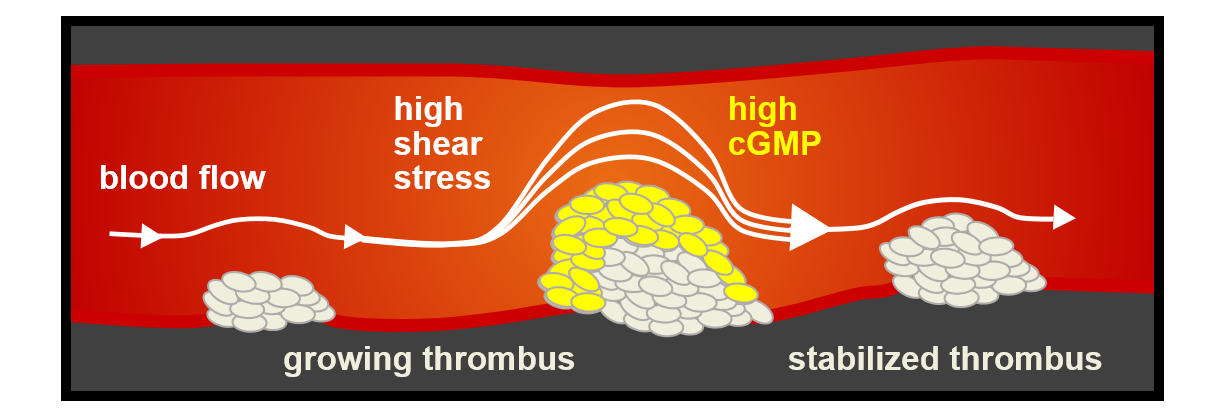News
16.10.2018
Antilock brake system in arteries protects against heart attack
Researchers at the University of Tübingen have discovered a natural mechanism that blocks the formation of dangerous blood clots
Tübingen biochemists have discovered a natural antiblocking system of the body that can reduce the formation of dangerous blood clots, also known as thrombosis. Thrombosis is a leading cause of death worldwide because it can block blood vessels causing heart attack or stroke. The newly discovered mechanism could help to improve therapeutic treatments. The study was conducted by a team of researchers including Dr. Lai Wen and Professor Robert Feil from the Interfaculty Institute of Biochemistry of the University of Tübingen in collaboration with the University Hospital Tübingen and the Universities of Lübeck and Würzburg. Their results have now been published in the journal Nature Communications.
"We have discovered a self-regulating mechanism in platelets of mice and humans that prevents the uncontrolled growth of a blood clot," says Lai Wen, lead author of the study. When a blood clot grows within a vessel, the blood needs to flow around the obstruction (Figure). The larger the clot the more force passing blood creates. The increasing “shear stress” acting on the clot initiates a mechanism that produces more cyclic guanosine monophosphate (cGMP) in the glued platelets. "This messenger molecule prevents further platelets from settling in the area and the life threatening clot slowly dissipates," Wen explains. The blood can again flow unrestricted and as the shear stress drops the mechanism stops. A small clot remains and closes the damaged vessel wall. cGMP acts as a kind of antiblocking system for blood vessels, which switches itself on or off as required via shear stress (Figure).
Dysfunction of the protective cGMP mechanism might lead to an increased risk for heart attack. “The discovery of the cGMP antiblocking system not only gives us a better understanding of how heart attacks develop, but it also opens up new possibilities in the treatment of thrombosis,” Feil adds. There are already drugs that support the body in the formation of cGMP. They were developed for other purposes, but might also be used to treat thrombosis. These include, for example, riociguat or sildenafil. The latter is often used in potency-enhancing pills.
"The relationship between mechanical force acting on cells and the formation of cGMP could also play a role in many other diseases", suspects Feil. "Interesting aspects for future research are the effects of the newly discovered mechanism on blood pressure, osteoporosis or cancer."
For further information on this study, see:
Press Release (English)
Pressemitteilung (Deutsch)
Publication:
Lai Wen, Susanne Feil, Markus Wolters, Martin Thunemann, Frank Regler, Kjestine Schmidt, Andreas Friebe, Marcus Olbrich, Harald Langer, Meinrad Gawaz, Cor de Wit, Robert Feil. A shear-dependent NO-cGMP-cGKI cascade in platelets acts as an auto-regulatory brake of thrombosis. Nature Communications. 2018; DOI: 10.1038/s41467-018-06638-8
Link to publication
Funding:
This work was supported by the Fund for Science, Deutsche Forschungsgemeinschaft (FOR 2060 projects FE 438/5-1 and FE 438/6-1, KFO 274 projects FE 438/7-1 and FE 438/8-2), and a travel grant from Boehringer Ingelheim Fonds.
Contact:
Prof. Dr. Robert Feil
University of Tübingen
Interfaculty Institute of Biochemistry (IFIB)
Phone +49-7071-29 73 350
robert.feil[at]uni-tuebingen.de

